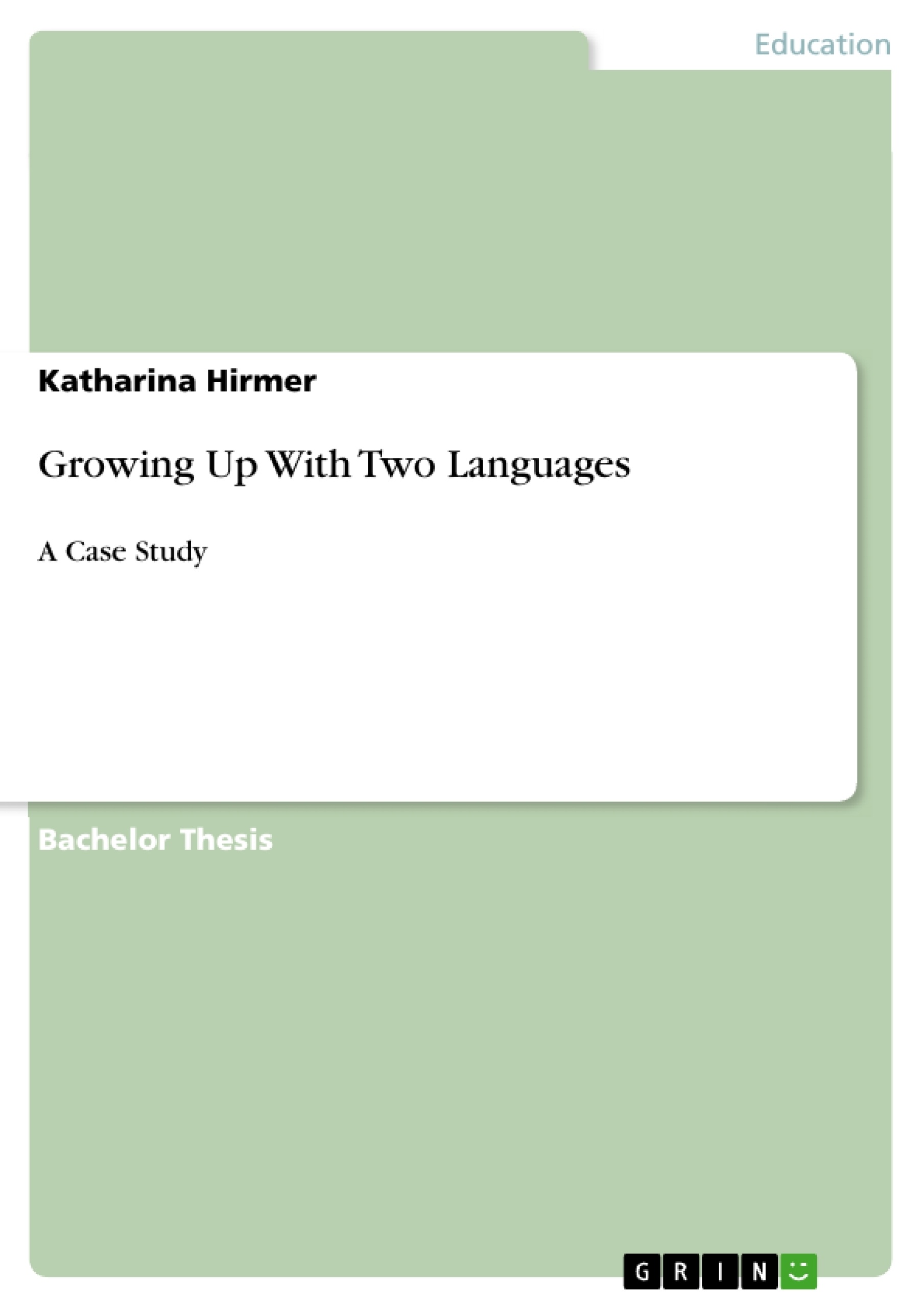This bachelor's thesis wants to give an insight into the life of three bilingual children and the underlying theory of bilingualism. First of all, there will be given a general overview about the theoretical background of bilingualism. Next, the case study itself will be presented and after introducing the family and their special situation in relation to bilingualism, the aims, methodology and materials of the study will be described. Subsequently, the results of the case study will be brought into relation with the underlying linguistic theory. At the end of the paper, the results of the case study will be summarized once again and further implications of bilingual acquisition will be made.
Inhaltsverzeichnis (Table of Contents)
- Introduction
- The Meaning of Bilingualism in the 21st Century
- What Is Exactly Meant by “Bilingualism”?
- Reasons for Choosing Bilingualism as the Topic of my Thesis
- Outline of the Paper
- Theoretical Background of Bilingualism
- Current Status of Research
- Categorization of Bilinguals
- Categorization According to the Age of the Speaker
- Categorization According to Skills
- Other Possibilities of Categorization
- One Person – One Language
- Interference and Code-mixing/-switching in Bilingual Acquisition
- Different Types of Interferences
- Code-Mixing and -Switching
- The Case Study
- Introduction of the Family and Their Special Situation
- Design of the Case Study
- Aim
- Methodology and Material
- Results of the Case Study Related to Linguistic Theory
- Categorization of the Children
- Abilities in the Four Basic Language Skills
- Interferences and Code-Mixing
- Findings with Respect to the Four Questions and Further Thoughts
- List of Works Cited
- Hard Copies
- Internet Sources
- Appendix
Zielsetzung und Themenschwerpunkte (Objectives and Key Themes)
This thesis aims to explore the effects of bilingualism on three children raised with English and German, examining their language proficiency and usage in both languages. The study focuses on the following key themes:- Categorization of bilingual children
- Language proficiency in both languages, including reading, writing, speaking, and understanding
- Impact of interference and code-mixing on language acquisition
- The role of 'unnatural bilingualism' in the children’s language development
- Possible influences of bilingualism on the children’s school performance
Zusammenfassung der Kapitel (Chapter Summaries)
The first chapter provides a comprehensive introduction to the topic of bilingualism, highlighting its increasing prevalence in the 21st century. The chapter then delves into the definition of bilingualism and examines various classifications of bilingual individuals, such as early vs. late bilinguals and passive vs. dominant bilinguals. The chapter concludes with a discussion of the 'one person – one language' principle and explores the phenomenon of interference and code-mixing in bilingual acquisition.
Chapter 2 introduces the case study family and their specific bilingual environment. The chapter describes the family's unique language history, highlighting the mother's 'unnatural bilingualism' and the children's exposure to English and German at different stages of their lives. The chapter concludes with a presentation of four research questions that will guide the analysis of the case study.
Chapter 3 delves into the specific findings of the case study, analyzing the children's language abilities and usage based on audio recordings and other data. The chapter examines their proficiency in understanding, speaking, reading, and writing in both languages, paying close attention to the occurrence of interferences and code-mixing. The chapter also discusses the children's school performance in both English and German, exploring possible connections to their bilingual background.
Chapter 4 addresses the four research questions raised earlier, drawing on the findings of the case study. The chapter discusses the children's classification as bilinguals, their level of code-mixing and interference, the impact of the mother's 'unnatural bilingualism', and potential connections between their bilingualism and school performance. The chapter concludes with further thoughts and recommendations for bilingual parents and educators.
Schlüsselwörter (Keywords)
The main keywords and focus topics of this thesis are: bilingualism, language acquisition, early bilingualism, simultaneous bilingualism, dominant bilingualism, passive bilingualism, compound bilingualism, coordinate bilingualism, bicultural bilingualism, interference, code-mixing, code-switching, language denial, unnatural bilingualism, and language development.- Arbeit zitieren
- Bakkalaureus (B.A.) Katharina Hirmer (Autor:in), 2012, Growing Up With Two Languages, München, GRIN Verlag, https://www.grin.com/document/199862



